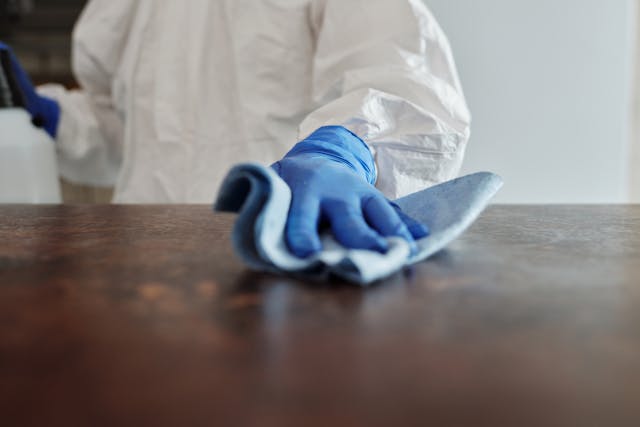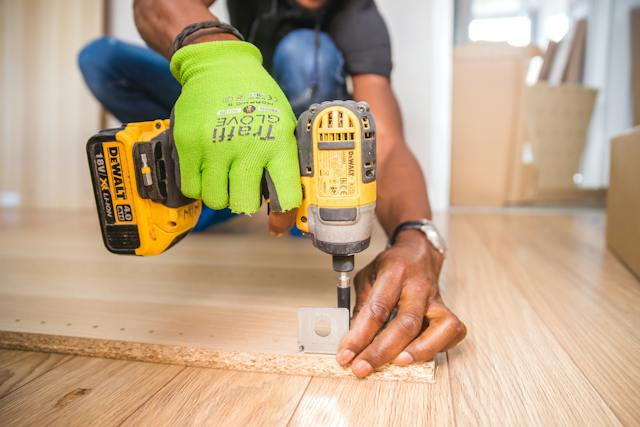What Exactly Is “Normal Wear and Tear”?

When you own a rental property, you’ll often come across the term “normal wear and tear” since the state of your unit and furnishings decline in value over the years. You may take good care of your rental space properly but all things considered, it will still depreciate as a natural way of life.
Many landlords manage the “normal wear and tear” of their rental spaces by arranging for repairs. But first, you must learn how to differentiate normal wear and tear from property damage.
You might end up assuming the cost of repairs from damages caused by tenants and this can impact your profits or investment returns.
On the other side, you might also charge renters for repairs or item replacements in your rental unit, when the damage is caused by normal wear and tear. Renters can only be charged for damage caused beyond wear and tear.
By reading this article, landlords can learn to determine which are considered wear and tear and which constitutes property damage. Keep reading to learn more!
Defining Wear and Tear
It is a given that your rental home will deteriorate over time and this is labeled as wear and tear. All items in your rental will also be subject to a decline in value. You can expect to deal with more damage as your property ages.

It is downright impossible to expect your dining table to appear as new and bright five years down the road, especially when multiple tenants have been using it. They could look dull and the wooden shine can appear dull over the years.
It will be more obvious that there are signs of property usage when you rent out your property after several years. The more residents you welcome and the longer the term of occupancy, the more normal wear and tear can manifest itself.
Examples of Wear and Tear
- Peeling paint
- Fading wallpaper
- Sticky doors and windows
- Loose grout
- Dull floors
- Worn enamel on sinks
- Mild stained carpet
Defining Unexpected Property Damage
Outside normal wear and tear are damages you can categorize unexpected damages. If the tenant exercised caution, this type of damage may be prevented. It can be caused by an accident or could be a result of intended abuse or negligence of a renter.
Examples of Unexpected Damages
- Excessive carpet burns
- Unapproved paint color
- Broken doors
- Chipped floors
- Chipped enamel in bathtub
- Unapproved wallpaper
- Holes in walls
Note that unexpected damage is not exclusively caused by the renters. There may be situations when the landlords can also be put to blame.

They may neglect to schedule property repairs even if a renter has reported a property issue or requested maintenance. This is clearly the fault of the property owner.
Examples of Negligence of Landlords
- Failing to address repairs for leaking roofs
- Failing to repair faulty structural property designs
- Lack of maintenance on HVAC systems
Tenants always expect landlords to keep a lookout for the rental space and in fact, it is the main duty of landlords to see to it that the unit remains a livable space for the occupants. It should promote safety and abide by the building and health codes mandated by local and state.
How Property Damage Impacts Security Deposits
If the property damage is attributed to normal wear and tear, tenants should not be paying for repair fees. However if renters are deemed responsible for property damage after an investigation,, then the landlord has every right to deduct the repair costs from the renter’s security deposit.
Legal battles can often be a direct result of unaddressed property damage or unclear classification of responsibility.
Tenants would obviously react when a landlord asks them to pay for damage beyond their control, such as those resulting from wear and tear like increasing dullness and fading of furnishings over many years.

Document Rental Property Damage For Easy Monitoring
To prevent situations from escalating into costly court battles, landlords can practice doing a property walkthrough with a tenant.
Before a renter moves in, it is best to perform a joint inspection of the property to ensure that both agree on the condition of the property before it is occupied.
By doing a property walkthrough, landlords can also discuss with tenants how they expect the rental space to be treated. Collecting photos and videos can support proof in evaluating damage at the end of the tenancy. This step will minimize conflicts between the parties to the rental agreement.
Existing damage cannot be blamed on a renter and will protect security deposit charges. It is best to rely on proper documentation to ensure that the right party will pay for the damage in the rental space.
Steps to take when you find property damage in the rental:
- Take pictures and record videos as documentation of the damage
- Create a list that details the repair fees for damaged items
- Calculate the cost of each repair
A detailed list of repair expenses is often a requirement that landlords need to give to their renters to support the security deposit refund. If the amount will be partially reimbursed or completely unrefunded, then you need to provide the renter with the list of legitimate deductions.
Extensive Screening as a Way to Prevent Property Damage
Another way for landlords to limit property damage and conflicts with renters is by attracting high-quality renters who ensure their rental units will be treated well.
Ideally, landlords must check a candidate’s rental history and make sure that the renter checks off the criteria to limit irresponsible residents that cause damage to the property.
Bottom Line
Normal wear is expected over time but you can always reduce excess property damage by maintaining your rental well, performing property inspections before the tenant moves in, and screening your renters properly.
Contact us at IPM Property Management today if you’re seeking a reliable Butte County and Chico, CA property management company to oversee your rental property and provide excellent property management services.
